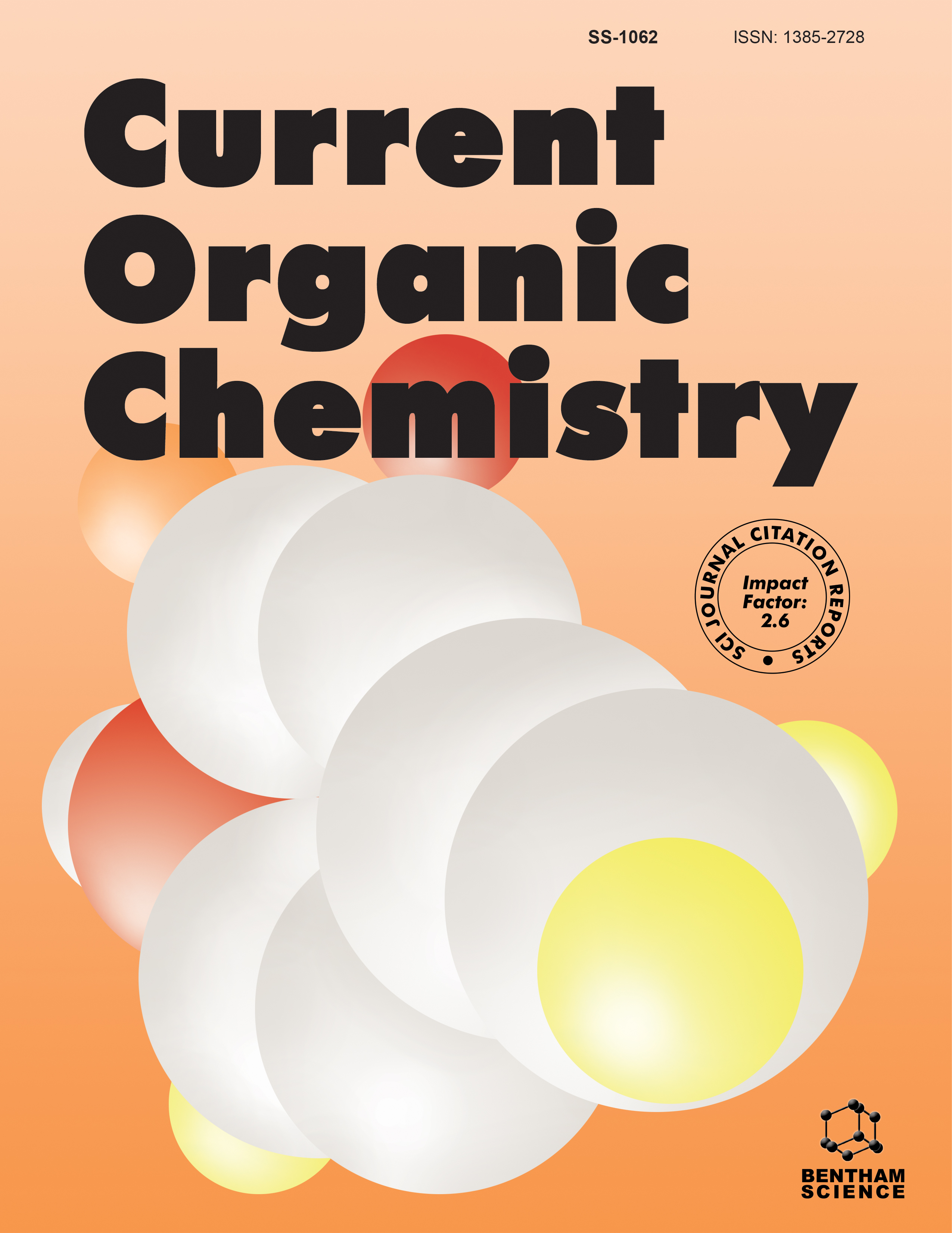- Home
- A-Z Publications
- Current Organic Chemistry
- Previous Issues
- Volume 7, Issue 11, 2003
Current Organic Chemistry - Volume 7, Issue 11, 2003
Volume 7, Issue 11, 2003
-
-
Stereoselective Synthesis of 1,2-Difunctional Compounds through the Addition of Organometallic Reagents to Chiral Masked Forms of Glyoxal
More LessAuthors: G. Martelli and D. Savoia“Chiral masked forms of glyoxal” can be prepared from cheap aqueous solution of glyoxal or its simple achiral derivatives by one- or multi-step sequences involving the transformation of one or preferably both carbonyl groups, while maintaining the oxidation state of the pre-existing carbons, by reaction with chiral enantiopure compounds, such as alcohols, amines, hydrazines, 1,2-diols, 1,2-aminoalcohols and 1,2-dia Read More
-
-
-
Fluorinated Barbituric Acid Derivatives: Synthesis and Bio-activity
More LessAuthors: N. Moussier, L. Bruche, F. Viani and M. ZandaBarbituric acid derivatives exert important action on the central nervous system, and recently have found totally new biomedicinal applications in fields such as cancer and AIDS therapy, and protease inhibitors. On the other hand, selective introduction of fluorine into biologically active compounds can either enhance their pharmacological properties or increase their therapeutic efficiency. This review focuses on the synt Read More
-
-
-
Dinuclear Transition Metal Complexes as Auxiliary Chromophores in Chiroptical Studies on Bioactive Compounds
More LessAuthors: J. Frelek, A. Klimek and P. RuskowskaChiroptical methods, the circular dichroism spectroscopy (CD) in particular, appear to be sensitive, fast and convenient methods for determination of absolute configuration of chiral compounds in solution. For the CD to be applicable, however, the investigated compounds have to be not only optically active but also should absorb circularly polarized light in an accessible spectral range. To carry out the circular dichroic studies Read More
-
-
-
Azomethine Ylides in Organic Synthesis
More LessAuthors: C. Najera and J.M. SansanoThis review will attempt to cover the literatures published from 1988 dealing with cyclic and acyclic azomethine ylides in which a part or the whole of the ylide conjugation is included in a conjugated heterocycle. Special emphasis will be given to the synthetic applications of these dipoles in the synthesis of complex structures as well as in key steps of total synthesis.
-
Volumes & issues
-
Volume 29 (2025)
-
Volume 28 (2024)
-
Volume 27 (2023)
-
Volume 26 (2022)
-
Volume 25 (2021)
-
Volume 24 (2020)
-
Volume 23 (2019)
-
Volume 22 (2018)
-
Volume 21 (2017)
-
Volume 20 (2016)
-
Volume 19 (2015)
-
Volume 18 (2014)
-
Volume 17 (2013)
-
Volume 16 (2012)
-
Volume 15 (2011)
-
Volume 14 (2010)
-
Volume 13 (2009)
-
Volume 12 (2008)
-
Volume 11 (2007)
-
Volume 10 (2006)
-
Volume 9 (2005)
-
Volume 8 (2004)
-
Volume 7 (2003)
-
Volume 6 (2002)
-
Volume 5 (2001)
-
Volume 4 (2000)
Most Read This Month
Article
content/journals/coc
Journal
10
5
false
en


